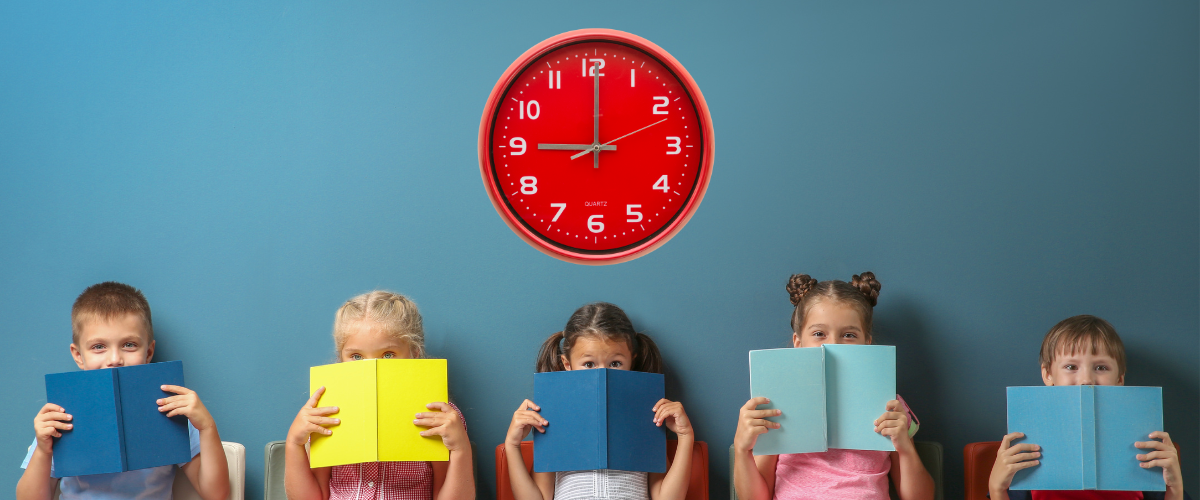Why Reading Volume Matters and How to Achieve It
Learn what research says is the most significant influence on the development of reading skills for middle grade readers.

It's not phonics
Many literacy advocates lament the low or declining reading scores nationwide. At the same time, they often highlight one or two states that have defied this trend, reporting increasing reading scores. The "miracle" occurred in Mississippi two years ago, and Louisiana is enjoying recognition this year. They inform us that the key to achieving success is adhering to the science of reading and implementing a rigorous phonics curriculum statewide.
Unfortunately, the data does not fully support the phonics explanation. The most frequently cited fourth-grade reading scores come from the National Assessment of Education Progress (NAEP), which recently reported that only 31% of fourth graders are proficient in reading, while 60% read at a basic level.1 Basic readers are accurate and fluent but struggle with complex comprehension. Proficient readers can read with even greater comprehension and insight. Students below basic struggle with decoding.
Phonics teaches children to decode or identify words but does not directly improve vocabulary or comprehension. Decoding significantly influences reading ability up to second grade; however, beyond that point, vocabulary, comprehension and motivation become much stronger predictors of reading ability.2 To understand why many children are basic and not proficient readers we need to look beyond phonics at factors inside and outside the classroom.

Key Factors
Most of us become strong readers through extensive and deep reading. There is substantial evidence that reading volume is a key factor in enhancing knowledge of word orthography, which facilitates word recognition and spelling.3 Additionally, reading volume fosters fluency and supplies the essential data needed for vocabulary building.4 The more students read, the more they encounter facts, concepts, and ideas--the essential building blocks of comprehension.
The research now clearly shows that reading volume significantly influences the development of reading skills after second grade. However, factors outside the classroom are limiting how much children read.5 The reduction in time spent reading for pleasure among nine to twelve-year-olds is notable. While 57% of eight-year-olds report that they read for pleasure most of the time, only 35% of nine-year-olds do so.6 Book sales to nine to twelve-year-olds decreased by 16% in 2022, and in just the first quarter of 2023, sales dropped another 10%. Barnes & Noble is reducing shelf space for children's novels in favor of more profitable books.
Most people believe that the decline in reading for pleasure is primarily due to the screens used for watching movies, playing games, sending text messages, and browsing the Internet.7 Screens have replaced opportunities for children to read novels, but the situation is more complex. Digital reading negatively affects reading comprehension, particularly for elementary and middle school students. Some speculate that the pandemic limited students' interactions with their peers, where they once learned how engrossing the books of Dav Pilkey and Jeff Kinney could be, not to mention the more sophisticated works of other authors. This lack of peer interaction zapped their motivation.
In school, many students, though not all, are taught using a reading curriculum that emphasizes minimal reading but extensive questioning and analysis.8 In 2010, researchers reported that all major reading programs lacked sufficient text for third graders to achieve fluency. Current data suggests that students read only 1,500 to 2,000 words weekly in many major programs. Another study found that a third of sixth-grade students and half of ninth-grade students read fewer than one page of text a day.

Keys to Success
Limiting screen time at home is an important first step in improving the likelihood that students will read at home, but schools and teachers can go a long way to build reading volume by changing how children are taught to read. Volume of reading is essential to developing vocabulary and comprehension. Choose or develop a reading curriculum built around books, not short passages and excerpts. Children must add 3,000 words a year to their reading vocabulary to create a reading vocabulary of 40,000 words by the 12th grade.9 A 5th grade novel contains about 40,000 words, of which 400 to 500 might be new or unfamiliar. Just by reading, the student infers the meaning of many of these words. Thus, students need to read at least eight to ten full-length English, social studies, and science books a year to keep pace with building that 40,000-word vocabulary.
In a recent article, Swedish researchers closely studied classrooms where students read many pages daily alongside classrooms where students did not.10 They examined classrooms from grades 4 through 9 where students were taught Swedish, English, social studies, and science. They acknowledged a complex relationship between teachers' instructional practices and the amount of student reading. No single instructional practice consistently identifies classrooms where students read extensively, but there are adaptable patterns of teacher behavior. The key is to foster autonomy, competence, and caring.
- The classrooms are well structured, and students know what is expected of them on a daily basis.
- The teachers set aside time for silent reading. This is not just free or choice reading, but reading the assigned texts. The assignments are within the students' competence.
- The teachers provide enough instruction in comprehension and metacognitive strategies, text structure, and background knowledge that students feel competent in tackling the assigned reading. However, instructional time is limited so that it does not encroach on silent reading time. The business of reading instruction is reading.
- Teachers balance competence and autonomy. As students' reading competence builds, they are allowed more autonomy in selecting texts for assignments and choice reading.
- Teachers regularly signal the value of reading in various ways. Reading serves as a tool for answering important questions, exploring personal issues, and, at times, as a means of escape.
- The teachers "signal to the students that they genuinely care for their personal development as readers" (p. 15), which boosts trust in the teacher as someone they can relate to as readers.
Mats Tegmark and his colleagues don't give us a recipe, a prescription, or a lesson plan but a guide for complex human relationships that build readers in the classroom. This is the emerging science of reading.
Printer-friendly version of this blog HERE.

Are you looking for a reading program to increase motivation and achievement?
We are confident the Read Side by Side Reading Program will be the right fit for your next curriculum adoption! To learn more about the program and request a sample kit, connect with one of our advisors!

Written by Peter Dewitz
Researcher & Consultant
Read Side by Side Publications, LLC.
References:
_______________________________
1 U.S. Department of Education. Institute of Education Sciences, National Center for Education Statistics, National Assessment of Educational Progress (NAEP), 2024 Reading Assessment.
2 Paris, Scott G., Robert D. Carpenter, Alison H. Paris, and Ellen E. Hamilton. "Spurious and genuine correlates of children's reading comprehension." In Children's reading comprehension and assessment, pp. 140-178. Routledge, 2005.
3 Mol, Suzanne E., and Adriana G. Bus. "To read or not to read: a meta-analysis of print exposure from infancy to early adulthood." Psychological bulletin 137, no. 2 (2011): 267.
Torppa, Minna, Pekka Niemi, Kati Vasalampi, Marja-Kristiina Lerkkanen, Asko Tolvanen, and Anna-Maija Poikkeus. "Leisure reading (but not any kind) and reading comprehension support each other---A longitudinal study across grades 1 and 9." Child Development 91, no. 3 (2020): 876-900.
Torppa, Minna, Kenneth Eklund, Sari Sulkunen, Pekka Niemi, and Timo Ahonen. "Why do boys and girls perform differently on PISA Reading in Finland? The effects of reading fluency, achievement behaviour, leisure reading and homework activity." Journal of research in reading 41, no. 1 (2018): 122-139.
Topping, Keith James, J. Samuels, and Terry Paul. "Does practice make perfect? Independent reading quantity, quality, and student achievement." Learning and instruction 17, no. 3 (2007): 253-264.
4 Allington, Richard L. "How Reading Volume Affects Both Reading Fluency and Reading Achievement." International Electronic Journal of Elementary Education 7, no. 1 (2014): 13-26.
5 Kois, Dan. Not Lost in a Book. Slate. July 5, 2024.
6 O'Sullivan. The Shifting Middle School Market, Publisher's Weekly, June 16, 2023.
7 Altamura, Lidia, Cristina Varga, and Ladislao Salmerón. "Do new forms of reading pay off? A Meta-analysis on the relationship between leisure digital reading habits and text comprehension." Review of Educational Research 95, no. 1 (2025): 53-88.
8 Dewitz, Peter, Michael Crusco, and Savannah Campbell. Comprehension instruction in core reading programs: Changes, divergence and illusions. (In Press).
9 Nagy, William E., Patricia A. Herman, and Richard C. Anderson. "Learning words from context." Reading Research Quarterly (1985): 233-253.
10 Tegmark, Mats, Monika Vinterek, Tarja Alatalo, and Mikael Winberg. "The Complex Relationship between Teachers' Instructional Practices and Students' Reading Amount." Reading Research Quarterly 60, no. 1 (2025): e561.



